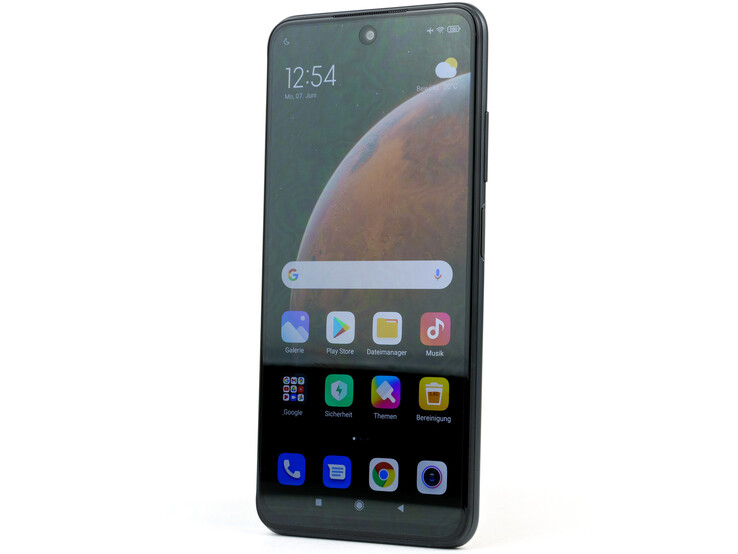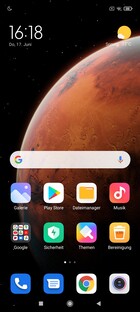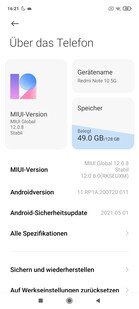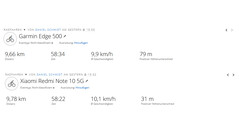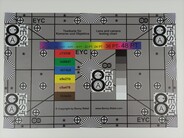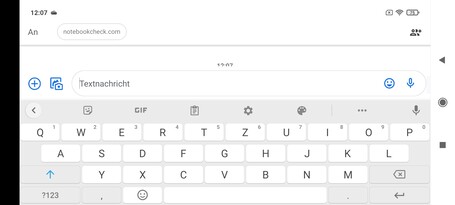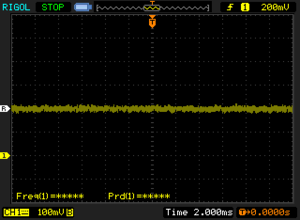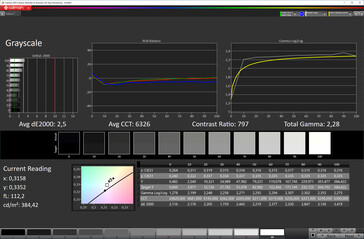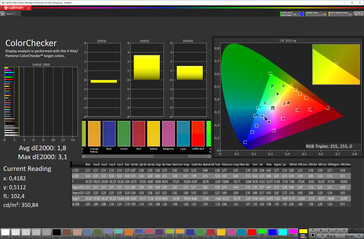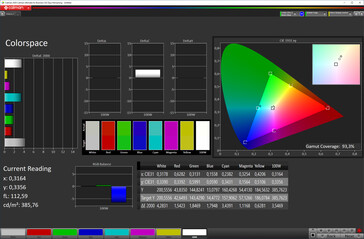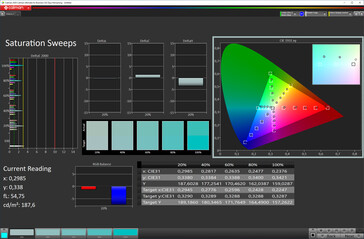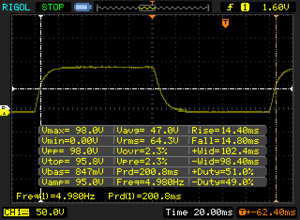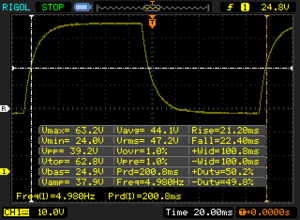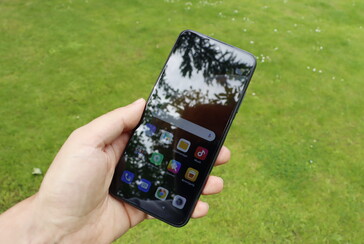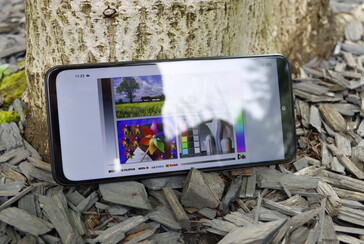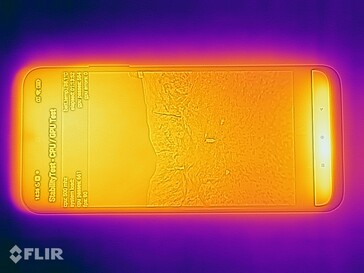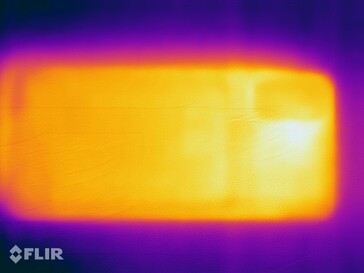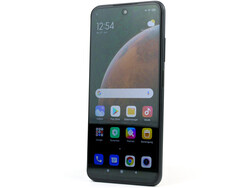Xiaomi Redmi Note 10 5G review: Budget 5G smartphone with large battery
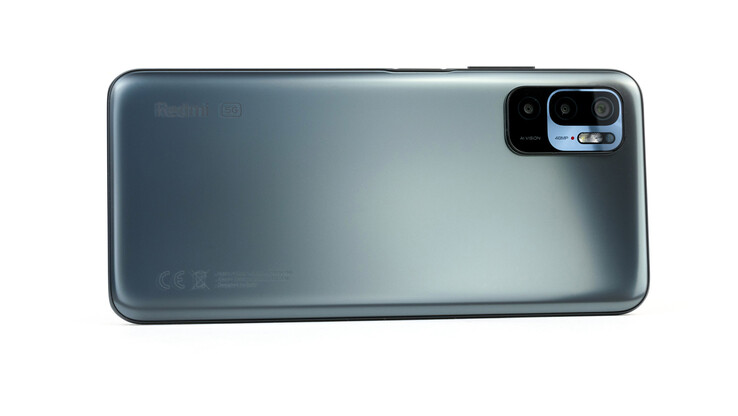
With the Redmi Note 9T 5G, the first smartphone of the model series that supports the modern mobile standard was introduced at the beginning of the year. The Redmi Note 10 5G isn't that different from it, and it offers an identical storage configuration as well as a 5,000 mAh battery, among other things. The Note 10's display is slightly smaller, but it supports 90 Hz. In return, a somewhat weaker processor and the older Gorilla Glass 3 have been installed.
At the same time, the Poco M3 Pro 5G is identical in terms of specs, but it costs even less and only differs when it comes to its design. The competition is usually more expensive, but the realme 8 5G and the Galaxy A32 5G are strong alternatives.
Possible contenders in comparison
Rating | Date | Model | Weight | Drive | Size | Resolution | Price |
|---|---|---|---|---|---|---|---|
| 80.4 % v7 (old) | 06 / 2021 | Xiaomi Redmi Note 10 5G Dimensity 700, Mali-G57 MP2 | 190 g | 128 GB UFS 2.2 Flash | 6.50" | 2400x1080 | |
| 79.7 % v7 (old) | 02 / 2021 | Xiaomi Redmi Note 9T 5G Dimensity 800U, Mali-G57 MP3 | 199 g | 128 GB UFS 2.2 Flash | 6.53" | 2340x1080 | |
| 79.3 % v7 (old) | 03 / 2021 | Samsung Galaxy A32 5G Dimensity 720, Mali-G57 MP3 | 205 g | 64 GB UFS 2.1 Flash | 6.50" | 1600x720 | |
| 80.2 % v7 (old) | 05 / 2021 | Realme 8 5G Dimensity 700, Mali-G57 MP2 | 185 g | 128 GB UFS 2.1 Flash | 6.50" | 2400x1080 | |
| 80.6 % v7 (old) | 05 / 2021 | Nokia X20 SD 480, Adreno 619 | 220 g | 128 GB UFS 2.1 Flash | 6.67" | 2400x1080 |
Case - Lots of colorful plastic without looking cheap
The Xiaomi Redmi Note 10 5G's design is simple, and most accents are set by the colors of the plastic backs, which are available in Aurora Green, Chrome Silver, Graphite Gray, and Nighttime Blue. The front is protected by Gorilla Glass 3 and covered by an additional protective film.
The build quality of the Xiaomi smartphone is good. The gap dimensions are both tight and even, and twisting attempts are rejected by the device. However, the additional plastic frame around the display immediately reveals the phone's price range based on its looks, especially since the frame is also encased in plastic.
The card slot has a plastic cover that has the same color as the frame and sits flush with it. The hybrid slot provides room for either two nano SIM cards or a microSD card instead of the second SIM. The Redmi smartphone doesn't have an IP certification.
Connectivity - The Redmi Note 10 5G almost has it all
No real points of criticism can be found in terms of the Redmi Note 10 5G's connectivity; the only thing that isn't particularly generous for a 5G smartphone is the 4 GB of RAM. Users who want to save a few Euros can opt for the 64 GB version, which costs 20 Euros (~$24) less.
The USB-C port operates according to the 2.0 standard and supports OTG, meaning that external peripherals and storage devices can be connected to the smartphone. However, wired video output isn't available.
Otherwise, the Redmi phone is pretty complete with Bluetooth 5.0, NFC, an IR blaster, an analog radio receiver, and an audio jack; only a notification LED is missing.
microSD card reader
Nominally, microSD cards up to a size of 512 GB are supported, and the exFAT file system doesn't pose any problems for the Redmi Note 10 5G either. However, a memory card can only be used as auxiliary media storage; the smartphone doesn't support storing app data on it or formatting it as internal storage.
The microSD slot's speed is at a good level in the Cross Platform Disk Test, but the Note 10 5G proved to be very slow in our copy test with our Toshiba Exceria Pro M501 reference card.
| SD Card Reader - average JPG Copy Test (av. of 3 runs) | |
| Xiaomi Redmi Note 10 5G (Toshiba Exceria Pro M501) | |
Cross Platform Disk Test (CPDT)
Software - Android 11 and MIUI 12.0 for the Xiaomi smartphone
Android 11 is used as the operating system, and Xiaomi runs its in-house MIUI 12.0.8 on top of it, which is equipped with security patches at the level of May 1, 2021 at the time of testing and is therefore up to date. The smartphone sports the "Android Enterprise Recommended" badge, which means that it will receive Android security updates for a minimum of three years. However, Xiaomi hasn't provided any information regarding major updates and the updating frequency.
The UI, as such, is very strict in its use of resources. Users who don't set exceptions for apps will quickly have to deal with them being restricted in the background. Besides its own apps, Xiaomi also preinstalls several third-party applications, but all of them can be uninstalled by the user.
Communication and GNSS - Good positioning capabilities and 5G
The Xiaomi Redmi Note 10 5G can access the Internet using all current mobile standards, and it also has a good frequency coverage. 5G SA is supported, but Xiaomi doesn't state for which bands exactly. The smartphone doesn't show any issues in terms of connectivity.
Despite the device's fast connection in terms of mobile networks, it only supports Wi-Fi 5 without MIMO antenna technology at best. The data rates with our reference router, the Netgear Nighthawk AX12, are correspondingly low. The standard actually has some room for improvement when it comes to sending data, but stable data transfer is more important.
The Redmi smartphone can communicate with the GPS, GLONASS, BeiDou, Galileo, and the SBAS supporting system satellite networks (all single-band). The satellite signal is obtained very quickly outdoors, and it's also very accurate with a precision of one meter.
The Note 10 5G has to face a comparison with the Garmin Edge 500 on a short bike ride. Although it does have its flaws, it usually determines the position better than the bike computer.
Telephone and call quality
The Redmi Note 10 5G has a hybrid SIM slot, so it can either be used in dual-SIM mode or with a single SIM and a microSD card. An eSIM isn't supported in Germany, nor is Wi-Fi calling or SIP accounts. However, VoLTE is on board.
The call characteristics are good. The user can be understood well when the device is held to the ear. Sound reverberates audibly over the speaker, but the microphones have a good range, so that the user talking doesn't need to remain in the immediate vicinity.
The Xiaomi phone is only average in terms of noise reduction. Minor noise is filtered out, but if you're sitting in close proximity to an AC unit, for example, you'll have to put up with it being audible during the call. Strong background noise is always audible, and the user's voice is transmitted understandably in that case, but it sounds very muffled.
Cameras - Redmi Note 10 5G with triple-camera setup
The front camera has a resolution of 8 MP, and it comes with a lot of settings for selfies. Although a Portrait mode is included, all options are already available in Photo mode. The difference is whether the background should be blurred or not. Photos are well lit, but selfies already look very soft with the default settings. Videos can be recorded in Full HD (30 FPS) at best, and they have a fairly high crop factor.
The main camera offers 48 MP (probably a Sony IMX582 sensor) and is equipped with electronic image stabilization. This enables decent photos during the day, but they look a bit oversharpened and lack dynamic range. The lens still captures enough light in the dark, but the autofocus no longer works properly, so that many details become blurry. If you want to zoom in, you have to do it digitally, which works quite well up to a 2x magnification; beyond that, however, you won't be able to achieve decent results. In addition, a sensor for depth information and a macro lens are included. The latter has a low close-up limit of about three centimeters, and it produces very oversharpened and somewhat washed-out looking pictures. We recommend using the digital zoom, since it delivers more pleasing results.
The main camera is only capable of capturing videos in Full HD (30 FPS) as well. It's a pity that Xiaomi doesn't take advantage of the sensor's potential here by allowing 4K videos at least.
Image comparison
Choose a scene and navigate within the first image. One click changes the position on touchscreens. One click on the zoomed-in image opens the original in a new window. The first image shows the scaled photograph of the test device.
Wide-angleWide-angleZoom (5x)Low-light
Color reproduction is pleasing, and there are no major deviations in our test under adjusted lighting conditions. Although our test chart isn't completely sharp when using the full 48 MP, not even at the center of the image, the result is otherwise quite decent.
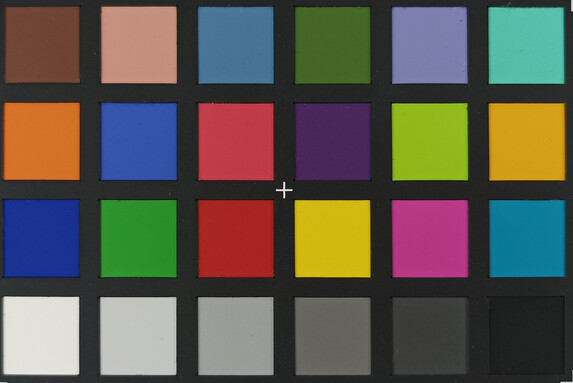
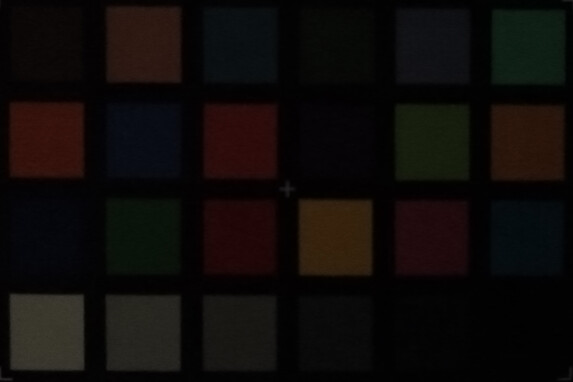
Accessories and warranty - Protective case and power adapter included in the box
The Xiaomi Redmi Note 10 5G comes with a modular 22.5-watt power adapter, a USB cable (Type-A to Type-C), a SIM tool, a silicone protective cover, a leaflet with safety instructions, and a quick-start guide.
There's only a 12-month warranty that can't be extended, but the retailer's warranty remains unaffected by this.
Input devices and handling - Note 10 5G with side-mounted fingerprint scanner
The capacitive touchscreen of the Redmi Note 10 5G has good gliding properties, and it responds to inputs quite quickly and reliably. However, the pre-applied protective film has a higher gliding resistance and shows smudges very quickly as well. Moreover, Google's GBoard is set up as keyboard layout, but it can be replaced with any other app from the Play Store.
The customizable vibration motor can be quite strong if desired, but it feels a bit spongy. At least it's pleasantly quiet. The fingerprint scanner is integrated into the power button; it's able to recognize stored fingerprints reliably as long as fingers aren't too damp, and it unlocks the smartphone at a pleasing speed. Alternatively or additionally, two-dimensional facial recognition can be configured using the front-facing camera, making for a much faster but less secure solution.
Display - 90 Hz IPS panel without PWM
The 6.5-inch (16.51 cm) IPS display found in the Xiaomi Redmi Note 10 5G has a resolution of 2400x1080 pixels that offers a high image sharpness. The refresh rate is set to 60 Hz by default, but it can also be increased to 90 Hz in the settings. The system can adjust the refresh rate adaptively between 90 and 30 Hz.
With the ambient light sensor activated, the panel achieves a good brightness that remains constant in the APL50 measurement. Users who choose to disable the automatic regulation will have a maximum of 440 cd/m² at their disposal.
Using a black background, the measured black level of 0.32 cd/m² is good and ensures a crisp contrast. With an even distribution of bright and dark areas, the black level increases to 0.46 cd/m², which reduces the contrast ratio to 1,196:1.
| |||||||||||||||||||||||||
Brightness Distribution: 86 %
Center on Battery: 550 cd/m²
Contrast: 1719:1 (Black: 0.32 cd/m²)
ΔE ColorChecker Calman: 1.8 | ∀{0.5-29.43 Ø4.78}
ΔE Greyscale Calman: 2.5 | ∀{0.09-98 Ø5}
93.3% sRGB (Calman 2D)
Gamma: 2.28
CCT: 6326 K
| Xiaomi Redmi Note 10 5G IPS, 2400x1080, 6.5" | Xiaomi Redmi Note 9T 5G IPS, 2340x1080, 6.5" | Samsung Galaxy A32 5G TFT-LCD, 1600x720, 6.5" | Realme 8 5G IPS, 2400x1080, 6.5" | Nokia X20 IPS, 2400x1080, 6.7" | |
|---|---|---|---|---|---|
| Screen | -53% | -81% | -63% | -85% | |
| Brightness middle (cd/m²) | 550 | 572 4% | 543 -1% | 576 5% | 646 17% |
| Brightness (cd/m²) | 515 | 540 5% | 512 -1% | 550 7% | 617 20% |
| Brightness Distribution (%) | 86 | 90 5% | 85 -1% | 91 6% | 89 3% |
| Black Level * (cd/m²) | 0.32 | 0.42 -31% | 0.63 -97% | 0.7 -119% | 0.7 -119% |
| Contrast (:1) | 1719 | 1362 -21% | 862 -50% | 823 -52% | 923 -46% |
| Colorchecker dE 2000 * | 1.8 | 4.1 -128% | 4.9 -172% | 3.58 -99% | 5.71 -217% |
| Colorchecker dE 2000 max. * | 3.1 | 11.2 -261% | 8.6 -177% | 6.95 -124% | 8.9 -187% |
| Greyscale dE 2000 * | 2.5 | 2.5 -0% | 6.3 -152% | 5.7 -128% | 6.2 -148% |
| Gamma | 2.28 96% | 2.24 98% | 2.23 99% | 2.141 103% | 2.122 104% |
| CCT | 6326 103% | 6525 100% | 8120 80% | 7922 82% | 8256 79% |
* ... smaller is better
Screen Flickering / PWM (Pulse-Width Modulation)
| Screen flickering / PWM not detected | |||
In comparison: 53 % of all tested devices do not use PWM to dim the display. If PWM was detected, an average of 8108 (minimum: 5 - maximum: 343500) Hz was measured. | |||
We examine the display quality using the CalMAN software. The most color-accurate result is achieved when the "Standard" color scheme is used. The default is an automatic mode that adapts colors to the ambient light and provides a much cooler image.
Display Response Times
| ↔ Response Time Black to White | ||
|---|---|---|
| 29.2 ms ... rise ↗ and fall ↘ combined | ↗ 14.4 ms rise | |
| ↘ 14.8 ms fall | ||
| The screen shows relatively slow response rates in our tests and may be too slow for gamers. In comparison, all tested devices range from 0.1 (minimum) to 240 (maximum) ms. » 77 % of all devices are better. This means that the measured response time is worse than the average of all tested devices (20.2 ms). | ||
| ↔ Response Time 50% Grey to 80% Grey | ||
| 43.6 ms ... rise ↗ and fall ↘ combined | ↗ 21.2 ms rise | |
| ↘ 22.4 ms fall | ||
| The screen shows slow response rates in our tests and will be unsatisfactory for gamers. In comparison, all tested devices range from 0.165 (minimum) to 636 (maximum) ms. » 72 % of all devices are better. This means that the measured response time is worse than the average of all tested devices (31.6 ms). | ||
On sunny days, it quickly becomes evident that the Xiaomi Redmi Note 10 5G could have used a little more brightness. The display looks very dim in sunlight, and on top of that, it's also reflective. On the other hand, there are no issues when in the shade.
The Redmi Note 10 5G's viewing-angle stability is good in everyday use; only flat viewing angles lead to a decrease in brightness. We weren't able to detect color inversions or a glow effect in the IPS panel, and we didn't notice any screen bleeding in our review sample either.
Performance - Redmi smartphone is equipped with the MediaTek Dimensity 700
The Redmi Note 10 5G has a MediaTek Dimensity 700 at its core that can access 4 GB of LPDDR4x RAM. The SoC is manufactured in a 7 nm process, and it can make use of two Cortex-A76 performance cores (up to 2.2 GHz) as well as six less power-hungry Cortex-A55 cores (up to 2.0 GHz). The integrated ARM Mali-G57 MP2 handles graphics processing.
Xiaomi needlessly confronts us with problems when it comes to benchmarks, because some of them are blocked by the firmware and can't be executed, which is a known issue on UL's website, among others. In addition to 3DMark, GFXBench and the current AnTuTu are also affected. So far, Xiaomi hasn't issued a statement regarding this problem.
Nevertheless, we were able to run some of the blocked benchmarks. Performance is similar to that of the realme 8 5G, which uses the same SoC. In Geekbench, the realme smartphone is always a bit faster, but the competitor really outperforms the Redmi smartphone in the system benchmarks, which can be attributed to the different UIs and the extra RAM. In return, the Note 10 5G beats its rival in AIMark.
All in all, the 700 is slightly slower than the 800U, which is used in the Redmi Note 9T 5G, and it positions itself close to the Snapdragon 730(G) in terms of CPU performance, in other words, in the mid-range.
| Geekbench ML | |
| 0.5 TensorFlow Lite CPU 0.5 (sort by value) | |
| Xiaomi Redmi Note 10 5G | |
| Average MediaTek Dimensity 700 (n=1) | |
| 0.5 TensorFlow Lite GPU (sort by value) | |
| Xiaomi Redmi Note 10 5G | |
| Average MediaTek Dimensity 700 (n=1) | |
| 0.5 TensorFlow Lite NNAPI / Core ML (sort by value) | |
| Xiaomi Redmi Note 10 5G | |
| Average MediaTek Dimensity 700 (n=1) | |
| AnTuTu v8 - Total Score (sort by value) | |
| Xiaomi Redmi Note 10 5G | |
| Xiaomi Redmi Note 9T 5G | |
| Samsung Galaxy A32 5G | |
| Realme 8 5G | |
| Nokia X20 | |
| Average MediaTek Dimensity 700 (249843 - 261067, n=3) | |
| VRMark - Amber Room (sort by value) | |
| Xiaomi Redmi Note 10 5G | |
| Xiaomi Redmi Note 9T 5G | |
| Realme 8 5G | |
| Average MediaTek Dimensity 700 (2642 - 2672, n=2) | |
| AImark - Score v2.x (sort by value) | |
| Xiaomi Redmi Note 10 5G | |
| Xiaomi Redmi Note 9T 5G | |
| Samsung Galaxy A32 5G | |
| Realme 8 5G | |
| Nokia X20 | |
| Average MediaTek Dimensity 700 (4108 - 12011, n=5) | |
The browser performance leaves a good impression in everyday use. However, more complex sites sometimes require a brief moment to load completely. The Note 10 5G falls a bit short of expectations in most benchmarks.
| Jetstream 2 - 2.0 Total Score | |
| Average of class Smartphone (23.8 - 387, n=149, last 2 years) | |
| Nokia X20 (Chrome 90) | |
| Average MediaTek Dimensity 700 (36 - 58.2, n=8) | |
| Realme 8 5G (Chrome 90) | |
| Xiaomi Redmi Note 9T 5G (Chrome 88.0.4324.93) | |
| Xiaomi Redmi Note 10 5G (Chrome 90) | |
| Samsung Galaxy A32 5G (Chrome 88) | |
| JetStream 1.1 - Total Score | |
| Nokia X20 (Chrome 90) | |
| Xiaomi Redmi Note 9T 5G (Chrome 88.0.4324.93) | |
| Realme 8 5G (Chrome 90) | |
| Average MediaTek Dimensity 700 (69.5 - 78.4, n=4) | |
| Xiaomi Redmi Note 10 5G (Chrome 90) | |
| Samsung Galaxy A32 5G (Chrome 88) | |
| Speedometer 2.0 - Result 2.0 | |
| Average of class Smartphone (15.2 - 643, n=122, last 2 years) | |
| Nokia X20 (Chome 90) | |
| Realme 8 5G (Chome 90) | |
| Xiaomi Redmi Note 9T 5G (Chrome 88.0.4324.93) | |
| Average MediaTek Dimensity 700 (34.4 - 41.7, n=6) | |
| Xiaomi Redmi Note 10 5G (Chrome 90) | |
| WebXPRT 3 - Overall | |
| Average of class Smartphone (38 - 380, n=31, last 2 years) | |
| Nokia X20 (Chrome 90) | |
| Average MediaTek Dimensity 700 (50 - 65, n=4) | |
| Samsung Galaxy A32 5G (Chrome 88) | |
| Xiaomi Redmi Note 10 5G (Chrome 90) | |
| Xiaomi Redmi Note 9T 5G (Chrome 88.0.4324.93) | |
| Octane V2 - Total Score | |
| Average of class Smartphone (2228 - 121337, n=197, last 2 years) | |
| Realme 8 5G (Chrome 90) | |
| Average MediaTek Dimensity 700 (15352 - 21843, n=9) | |
| Xiaomi Redmi Note 9T 5G (Chrome 88.0.4324.93) | |
| Nokia X20 (Chrome 90) | |
| Xiaomi Redmi Note 10 5G (Chrome 90) | |
| Samsung Galaxy A32 5G (Chrome 88) | |
| Mozilla Kraken 1.1 - Total | |
| Samsung Galaxy A32 5G (Chrome 88) | |
| Xiaomi Redmi Note 10 5G (Chrome 90) | |
| Xiaomi Redmi Note 9T 5G (Chrome 88.0.4324.93) | |
| Realme 8 5G (Chrome 90) | |
| Nokia X20 (Chrome 90) | |
| Average MediaTek Dimensity 700 (2195 - 3387, n=8) | |
| Average of class Smartphone (257 - 28190, n=154, last 2 years) | |
* ... smaller is better
The UFS 2.2 storage in the Xiaomi Redmi Note 10 5G promises high transfer speeds. As a matter of fact, these are actually much higher than in the rival realme 8 5G when it comes to sequential writing. However, a comparison with the predecessor model reveals that our test smartphone still has room for improvement, which also applies to reading and writing small data blocks. However, none of this is noticeable in everyday use.
| Xiaomi Redmi Note 10 5G | Xiaomi Redmi Note 9T 5G | Realme 8 5G | Samsung Galaxy A32 5G | Xiaomi Redmi Note 8T | Nokia X20 | Average 128 GB UFS 2.2 Flash | Average of class Smartphone | |
|---|---|---|---|---|---|---|---|---|
| AndroBench 3-5 | 13% | -3% | 1% | -52% | -9% | 13% | 176% | |
| Sequential Read 256KB (MB/s) | 939 | 913 -3% | 969 3% | 858 -9% | 315.8 -66% | 489.3 -48% | 736 ? -22% | 2228 ? 137% |
| Sequential Write 256KB (MB/s) | 398 | 483.5 21% | 201 -49% | 381.7 -4% | 173.9 -56% | 462.7 16% | 532 ? 34% | 1852 ? 365% |
| Random Read 4KB (MB/s) | 151.6 | 171.1 13% | 192 27% | 174.6 15% | 90.4 -40% | 165.4 9% | 193 ? 27% | 296 ? 95% |
| Random Write 4KB (MB/s) | 162.8 | 197 21% | 175 7% | 167.1 3% | 91.2 -44% | 144.6 -11% | 186.3 ? 14% | 339 ? 108% |
Games - Not made for high frame-rate gaming
With our partner GameBench, we analyzed the gaming performance of the Xiaomi Redmi Note 5G in more detail. The results are mixed: On one hand, popular games like Wild Rift run smoothly at 60 FPS even in the highest detail settings, while older games like Dead Trigger 2 run at a maximum of 40 FPS with numerous frame drops. In the demanding game PUBG Mobile, the HD setting can be selected at best, which then results in a fairly constant 30 FPS.
The sensors work properly, but the touchscreen shows a comparatively high gliding resistance, and the mono speaker quickly becomes blocked when the device is held in landscape mode. In this regard, the Xiaomi smartphone is certainly not aimed at enthusiasts but rather at casual gamers.
Emissions - Budget Xiaomi phone with powerful mono speaker
Temperature
The surface temperatures of the Xiaomi Redmi Note 10 5G are already high in idle usage, and they mostly fluctuate around the 30 °C (~86 °F) mark. They're even higher under prolonged load, reaching almost 40 °C (~104 °F) in some spots. Although this is very warm, it's by no means a cause for concern.
We examined the SoC's performance stability with GFXBench's battery test. Both scenarios reveal a constant performance, but it's lower than expected in the easier T-Rex test at least.
(+) The maximum temperature on the upper side is 39.5 °C / 103 F, compared to the average of 35.2 °C / 95 F, ranging from 21.9 to 247 °C for the class Smartphone.
(+) The bottom heats up to a maximum of 36.8 °C / 98 F, compared to the average of 34 °C / 93 F
(+) In idle usage, the average temperature for the upper side is 31.8 °C / 89 F, compared to the device average of 32.9 °C / 91 F.
Speaker
The mono speaker at the bottom of the Redmi Note 10 5G can get very loud, and it even delivers a bit of bass. However, mids are a bit too thin, resulting in the smartphone sounding a bit weak. Moreover, high tones distort a lot at high volumes, but the output quality is okay at medium volumes.
Alternatively, the headphone jack can be used as well. However, its signal-to-noise ratio of 67.84 dBFS is only just satisfactory, meaning that high demands will not be met here. A positive aspect is the broad support of audio codecs for Bluetooth (SBC, AAC, aptX, aptX HD, aptX Adaptive, aptX TWS+, LDAC, LHDC V. 1-3).
Xiaomi Redmi Note 10 5G audio analysis
(+) | speakers can play relatively loud (92.3 dB)
Bass 100 - 315 Hz
(-) | nearly no bass - on average 27.2% lower than median
(+) | bass is linear (3.5% delta to prev. frequency)
Mids 400 - 2000 Hz
(±) | reduced mids - on average 6.9% lower than median
(+) | mids are linear (5.2% delta to prev. frequency)
Highs 2 - 16 kHz
(+) | balanced highs - only 2.6% away from median
(+) | highs are linear (3.2% delta to prev. frequency)
Overall 100 - 16.000 Hz
(±) | linearity of overall sound is average (17.4% difference to median)
Compared to same class
» 12% of all tested devices in this class were better, 8% similar, 80% worse
» The best had a delta of 11%, average was 35%, worst was 134%
Compared to all devices tested
» 32% of all tested devices were better, 8% similar, 59% worse
» The best had a delta of 4%, average was 24%, worst was 134%
Samsung Galaxy A32 5G audio analysis
(+) | speakers can play relatively loud (93.2 dB)
Bass 100 - 315 Hz
(-) | nearly no bass - on average 22.6% lower than median
(+) | bass is linear (3.3% delta to prev. frequency)
Mids 400 - 2000 Hz
(±) | reduced mids - on average 5.8% lower than median
(+) | mids are linear (4.3% delta to prev. frequency)
Highs 2 - 16 kHz
(±) | higher highs - on average 7.1% higher than median
(+) | highs are linear (3.5% delta to prev. frequency)
Overall 100 - 16.000 Hz
(±) | linearity of overall sound is average (17.7% difference to median)
Compared to same class
» 14% of all tested devices in this class were better, 8% similar, 78% worse
» The best had a delta of 11%, average was 35%, worst was 134%
Compared to all devices tested
» 34% of all tested devices were better, 8% similar, 58% worse
» The best had a delta of 4%, average was 24%, worst was 134%
Battery life - Every last drop is squeezed out from the 5,000 mAh battery
Energy consumption
Power consumption in the Redmi Note 10 5G is similar to that of its predecessor, and it requires quite a bit of energy, especially at maximum display brightness; this is due to the IPS technology on one hand, and to the 90 Hz refresh rate on the other.
The 5,000 mAh battery is fully recharged in just over two hours (121 minutes) using the included power adapter. Wireless charging is not supported.
| Off / Standby | |
| Idle | |
| Load |
|
Key:
min: | |
| Xiaomi Redmi Note 10 5G 5000 mAh | Xiaomi Redmi Note 9T 5G 5000 mAh | Samsung Galaxy A32 5G 5000 mAh | Xiaomi Redmi Note 8T 4000 mAh | Average MediaTek Dimensity 700 | Average of class Smartphone | |
|---|---|---|---|---|---|---|
| Power Consumption | -3% | -36% | 7% | -13% | -34% | |
| Idle Minimum * (Watt) | 0.71 | 0.68 4% | 0.64 10% | 0.62 13% | 0.841 ? -18% | 0.842 ? -19% |
| Idle Average * (Watt) | 2.08 | 2.16 -4% | 1.95 6% | 1.77 15% | 2.1 ? -1% | 1.439 ? 31% |
| Idle Maximum * (Watt) | 2.13 | 2.2 -3% | 1.98 7% | 1.8 15% | 2.26 ? -6% | 1.624 ? 24% |
| Load Average * (Watt) | 3.44 | 3.63 -6% | 6.77 -97% | 3.42 1% | 4.39 ? -28% | 7.03 ? -104% |
| Load Maximum * (Watt) | 5.58 | 5.78 -4% | 11.42 -105% | 6.14 -10% | 6.21 ? -11% | 11.3 ? -103% |
* ... smaller is better
Power consumption with Geekbench, GFXBench, and in idle usage (150 cd/m²)
Battery life
Xiaomi does a lot right when it comes to battery life. The large battery helps the Redmi Note 10 5G achieve long runtimes, but its efficiency is still a bit lacking in everyday use as is especially demonstrated by the comparison with the Galaxy A32 5G, which is able to get longer runtimes out of an identically sized battery. To be fair, however, we have to admit that this is mostly due to the Samsung smartphone's panel resolution, which only provides the lower HD image quality.
| Xiaomi Redmi Note 10 5G 5000 mAh | Xiaomi Redmi Note 9T 5G 5000 mAh | Samsung Galaxy A32 5G 5000 mAh | Realme 8 5G 5000 mAh | Nokia X20 4470 mAh | |
|---|---|---|---|---|---|
| Battery runtime | 8% | 14% | -1% | -21% | |
| Reader / Idle (h) | 49.6 | 59.4 20% | 49.3 -1% | ||
| H.264 (h) | 16.9 | 20.3 20% | 22.1 31% | ||
| WiFi v1.3 (h) | 18.6 | 18.9 2% | 20.6 11% | 18.4 -1% | 14.7 -21% |
| Load (h) | 5.7 | 5 -12% | 6.6 16% |
Pros
Cons
Verdict - Good 5G entry-level device
The Xiaomi Redmi Note 10 5G is an inexpensive and very attractive entry into the 5G universe for a current price of less than 200 Euros (~$239). Its equipment is pretty complete and includes a fast mid-range SoC, a strong battery, FM radio, an IR blaster, microSD support, and NFC. Only the lack of a notification LED and full-fledged dual SIM can be criticized.
The Xiaomi Redmi Note 10 5G proved to be a pretty complete entry-level smartphone in the test.
The cameras deserve some criticism too. The main sensor falls short of its potential in the test, particularly in terms of video performance, and the two additional lenses don't offer any real added value in everyday use.
Especially in this aspect, the Galaxy A32 5G is in a better position. In return, however, compromises have to be made in terms of the display resolution and refresh rate. The realme 8 5G is also an exciting alternative that looks very similar to the Note 10 5G on the spec sheet, but with ColorOS, it has a UI that doesn't include ads, and the device also supports true dual-SIM functionality.
Price and availability
You can find the Redmi Note 10 5G with 128 GB of storage and 4 GB of RAM both on newegg ($239) as well as in Walmart's online store ($242).
Xiaomi Redmi Note 10 5G
- 06/18/2021 v7 (old)
Daniel Schmidt




